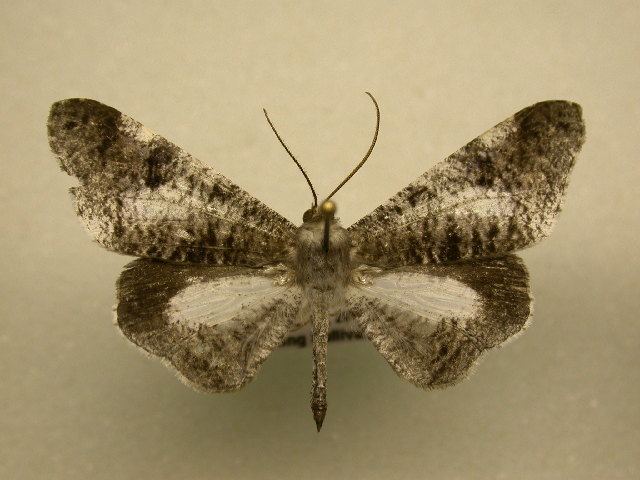Superfamily Hedyloidea Rank Species | ||
 | ||
Similar Macrosoma cascaria, Macrosoma albida, Macrosoma heliconiaria, Hedylidae | ||
Macrosoma conifera is moth-like butterfly described by William Warren in 1897. It belongs to the Hedylidae family. Originally it belonged to the genus Phellinodes. Malcolm J. Scoble combined it with Macrosoma in 1986.
Contents
Distribution
The species is found extensively in Guatemala, north of Paraguay: Villarrica, Gorgona Island off the coast of Colombia, Cusco in the Peruvian Andes to eastern Brazil, Amazonas region of Venezuela, the island of Trinidad, Suriname, French Guiana, and Belém at the mouth of the Amazon in northeastern Brazil.
Wings
M. conifera has wings of the greyish brown ground colour.
Forewing: The forewing has weak medial, semi-translucent area. The triangular white patch on costa is usually prominent, sometimes reduced. The apex is of dark grey-brown colour.
Hindwing: The termen is sometimes weakly sinuate, sometimes rounded; medially semi-translucent with darkish grey-brown colour.
The length of the forewing is 21–26 mm.
Male
Followings are the characteristics of the male genitalia:
Female
The female genitalia has the following features:
Antenna
The antenna is not bipectinate in both sexes.
Diagnosis
The absence of chestnut brown on the wings of M. conifera distinguishes the species from M. hedylaria and M. cascaria. M. conifera is also similar in wing pattern to M. semiermis and its relatives, but in M. conifera the antenna is filiform not bipectinate.
